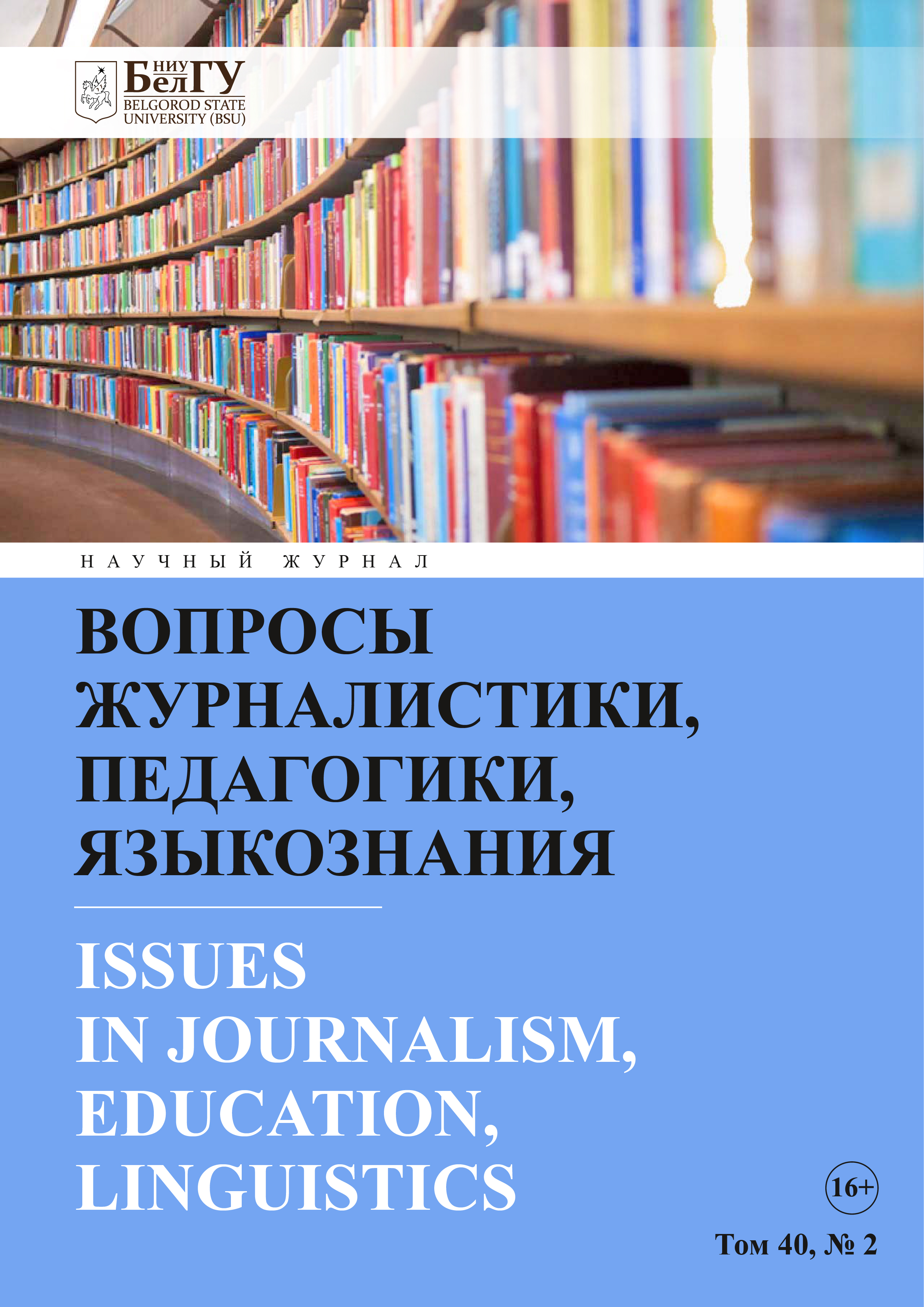Местоимения vos и tú в испанском языке Монтевидео: восприятие носителей (на материале корпуса устной речи PRESEEA)
DOI:
https://doi.org/10.52575/2712-7451-2021-40-2-280-291Ключевые слова:
испанский язык, Латинская Америка, Уругвай, личные местоимения, формы обращения, метаязыковая рефлексияАннотация
Представлены результаты исследования восприятия личных местоимений 2-го лица единственного числа vos и tú жителями г. Монтевидео (Уругвай). Проанализированы мнения информантов, высказанные ими в интервью из корпуса Proyecto para el estudio sociolingüístico del español de España y de América (PRESEEA). Подтверждено наличие в испанском языке Монтевидео двух параллельно функционирующих местоименных систем, а также сделано предположение о существовании третьей. Результаты могут быть использованы при дальнейшем изучении уругвайского национального варианта испанского языка (в частности, в исследованиях спонтанной речи).
Библиографические ссылки
Bertolotti V., Coll M. 2006. Apuntes sobre el español en el Uruguay: historia y rasgos caracterizadores [Notes on Spanish in Uruguay: history and characterizing features]. Ámbitos, 16: 31–40. (in Spanish)
Carvalho A.M. 2010. ¿Eres de la frontera o sos de la frontera? Variation and alternation of second-person verbal forms in Uruguayan border Spanish [Eres de la frontera o sos de la frontera? Variation and alternation of second-person verbal forms in Uruguayan border Spanish]. Southwest Journal of Linguistics, 29: 1–23. (in English)
Costa B., da Conceição C. 2011. La variación de las fórmulas de tratamiento de segunda persona del singular en publicidades de Montevideo [The variation of the formulas for treating the second person singular in advertisements in Montevideo]. Diadorim, 8: 375–395. (in Spanish)
Di Tullio Á., Malcuori M. 2012. Gramática del español para maestros y profesores del Uruguay. Montevideo [Spanish grammar for teachers from Uruguay]. ANEP, 443 p. (in Spanish)
Duarte Favaro M. 2011. ¿Y tú de donde sos?: Estudio cualitativo sobre el uso específico del tuteo en el habla montevideana [Where are you from ?: Qualitative study on the specific use of tuteo in Montevideo speech]. Available at: http://diva-portal.org/smash/record.jsf?pid=diva2%3A427633 (accessed: 01.04.2021) (in Spanish)
Elizaincin A. 1992. El español actual en el Uruguay [Current Spanish in Uruguay]. In: Hernández C. (coord.) Historia y presente del español de América [History and present of the Spanish of America]. Valladolid, Publ. Junta de Castilla y León: 759–774. (in Spanish)
Fontanella de Weinberg M.B. 1999. Sistemas pronominales de tratamiento usados en el mundo hispánico [Pronominal treatment systems used in the Hispanic world]. In: Bosque I., Demonte V. (dirs.), Gramática descriptiva de la lengua española [Descriptive grammar of the Spanish language]. Vol. 1. Madrid, Publ. Espasa Calpe: 1404–1405. (in Spanish)
Lipski J. 1996. El español de América [The Spanish of America]. Madrid, Publ. Cátedra, 446 p. (in Spanish)
Moyna M.I. 2015. Voseo / Tuteo Variation in Uruguayan Popular Songs (1960–2010) [Voseo / Tuteo Variation in Uruguayan Popular Songs (1960–2010)]. Romanische Forschungen, 127 (1): 3–28. (in German)
Moyna M.I. 2017. Strategies of polite address in Uruguayan Spanish: Is tú the new usted? INAR 4 Helsinki, June 8–9, 2017. (in English)
Moyna M.I., Loureiro-Rodríguez V. 2017. La técnica de máscaras emparejadas para evaluar actitudes hacia formas de tratamiento en el español de Montevideo [The paired mask technique to assess attitudes towards forms of treatment in the Spanish of Montevideo]. RILI, 15 (2): 47–82. (in Spanish)
PRESEEA. 2014. Corpus del Proyecto para el estudio sociolingüístico del español de España y de América [Corpus of the Project for the Sociolinguistic Study of Spanish in Spain and America]. Universidad de Alcalá. Available at: http://preseea.linguas.net (дата обращения: 01.04.2021). (in Spanish)
RAE-ASALE. 2009. Nueva gramática de la lengua española [New grammar of the Spanish language]. Madrid, Espasa, 4032 p. (in Spanish)
Ricci J., Malán de Ricci I. 1962/63. Anotaciones sobre el uso de los pronombres tú y vos en el español del Uruguay [Notes on the use of the pronouns tú and vos in Uruguayan Spanish]. Anales del Instituto de Profesores Artigas, 7–8: 163–166. (in Spanish)
Rona J.P. 1967. Geografía y morfología del «voseo» [Geography and morphology of «voseo»]. Pôrto Alegre, Publ. Pontifícia Universidade Católica do Rio Grande do Sul, 116 p. (in Portuguese)
Shively A. 2016. Voseo, tuteo y ustedeo en el español uruguayo: uso, variación pragmática y cambios generacionales [Voseo, tuteo y ustedeo in Uruguayan Spanish: use, pragmatic variation and generational changes]. IULC Working Papers, 15 (1): 231–256. (in Spanish)
Uber D. 2021. “Feel really Uruguayan”. In: (Ed.) Díaz-Campos M., Sessarego S. Aspects of Latin American Spanish Dialectology. John Benjamins Pub. Co.: 29–46. (in English)
Weyers J. 2009. The Impending Demise of tú in Montevideo, Uruguay. Hispania, 92.4: 829–839. (in English)
Weyers J. 2013. Linguistic attitudes toward the tuteo and voseo in Montevideo, Uruguay. Spanish in Context, 10 (2): 175–198. (in English)
Weyers J., Canale G. 2013. Tuteo and voseo in the classroom: Linguistic attitudes among Montevidean educators. Spanish in Context 10 (3): 371–389. (in English).
Просмотров аннотации: 403
Поделиться
Опубликован
Как цитировать
Выпуск
Раздел
Copyright (c) 2021 Игорь Вячеславович Стефанчиков

Это произведение доступно по лицензии Creative Commons «Attribution» («Атрибуция») 4.0 Всемирная.


